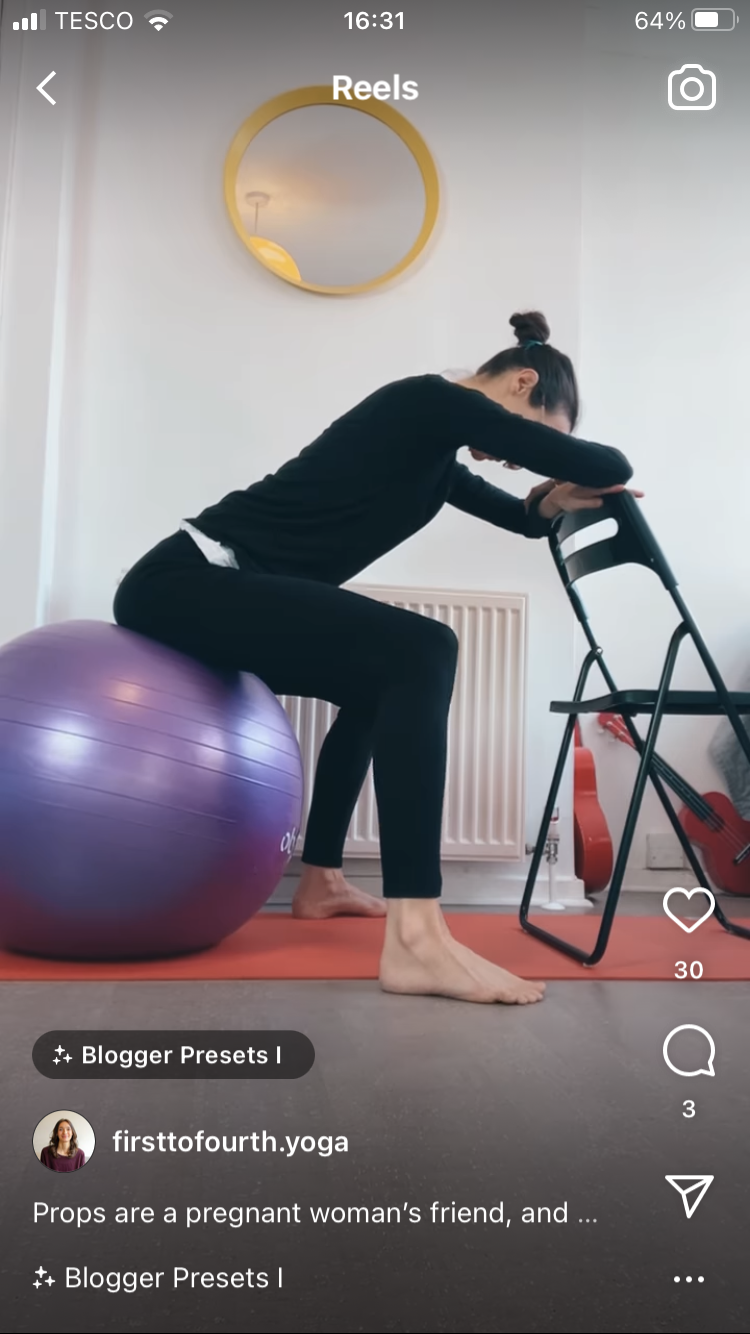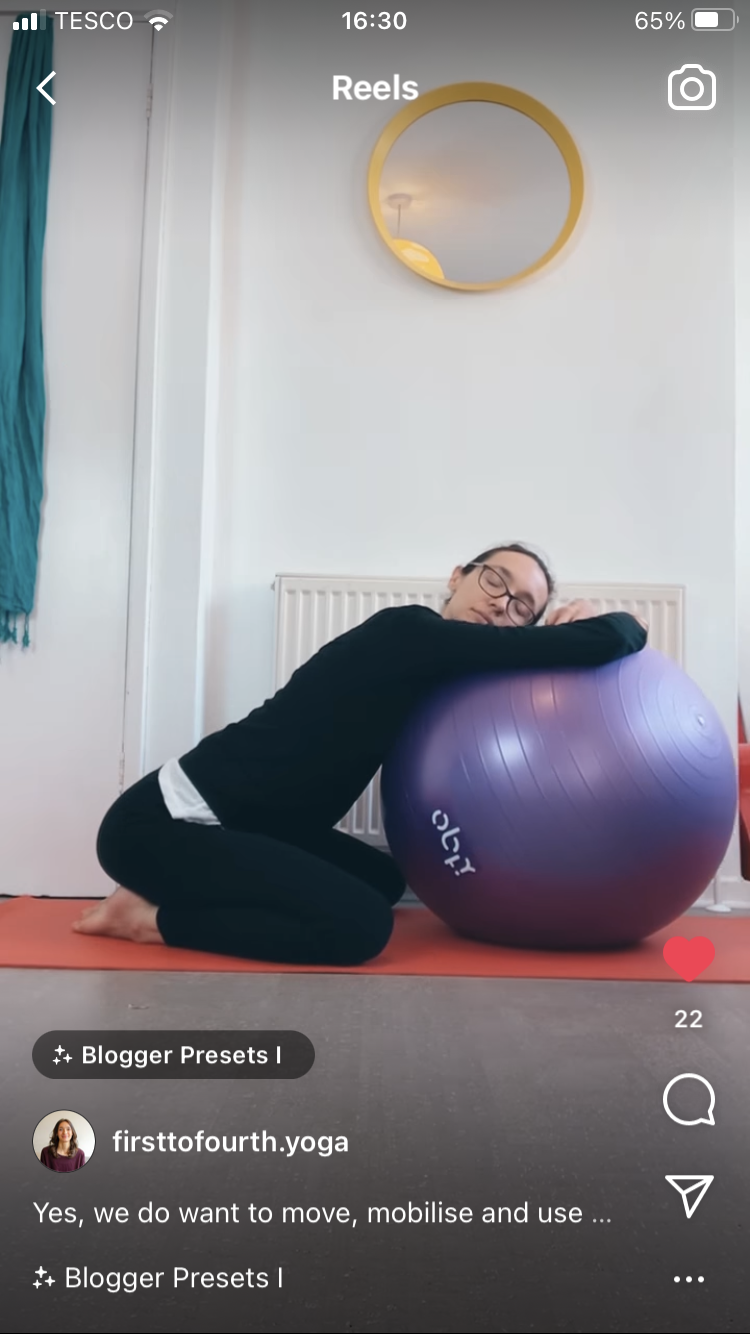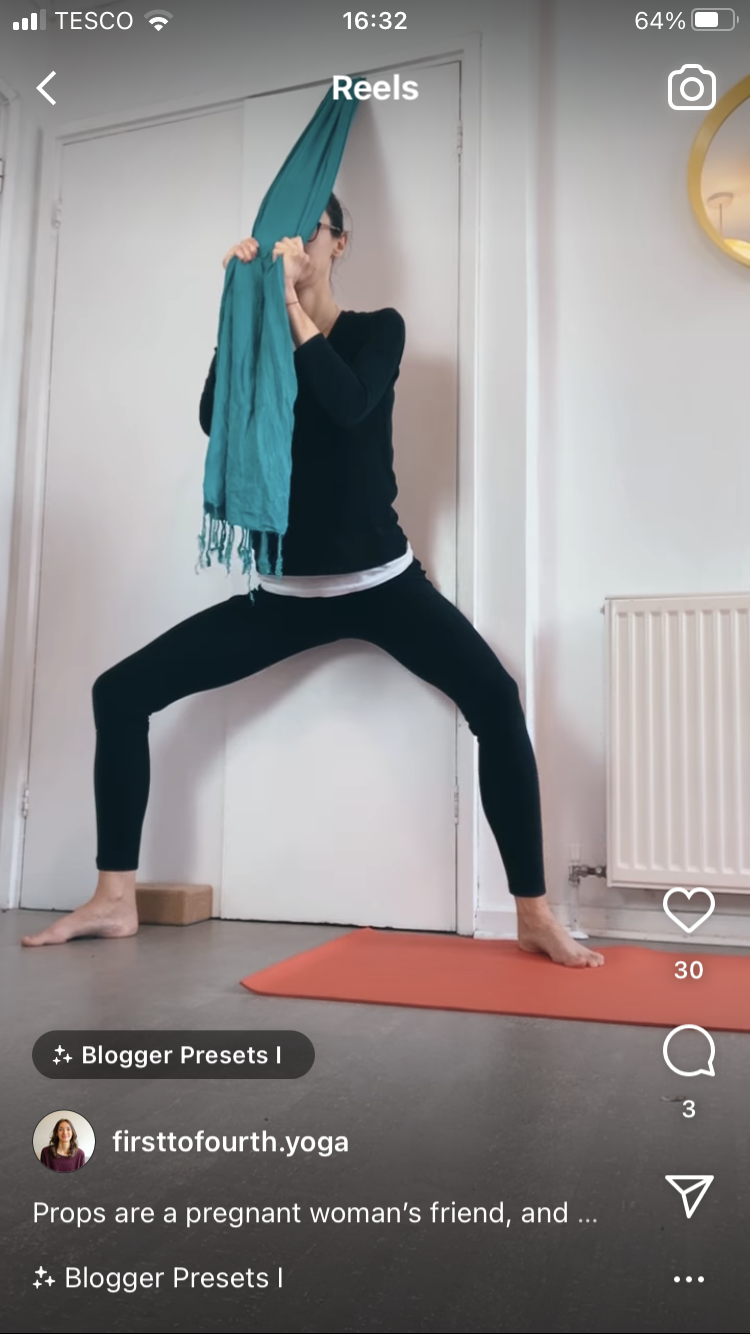The best positions for labour and birth: 5 need-to-know tips
Labour & birth can be a long journey - especially for first-time mums. As contractions work to usher your baby through the tight space of your pelvis, a labyrinth-like space where every millimetre matters, the position(s) you adopt and what you do with your body can make a great deal of difference between an effective and (as) comfortable (as can be) experience, and a long, exhausting and stressful one, which can lead to a cascade of interventions you may not want
Unfortunately, most antenatal and birth preparation courses do not cover much, or at all, what to do with your body to help you ride your contractions, or biomechanics for birth on how to find optimal space in the pelvis for your baby.
In this blog, I share my 5 top tips about positioning for labour and birth (they’re not necessarily the same thing!), 5 absolute need-to-know before your baby’s grand arrival to increase your chances of an easier, more comfortable, positive and empowering birth experience.
Explore many positions
There are so many possibilities! Standing, walking, low squatting, half squatting, kneeling high, kneeling low, seating on a ball, reclining on sitbones, kneeling lunges, and more! Exploring all these positions, changing every 15 to 20mn (especially to start with) is the best way to help you find what’s comfortable for you to effectively ride your surges and tune into your instincts (more on this below!).
Trying different labour positions will also help you find space in various openings of the pelvis as labour and your baby progresses through (see point below!), and keep contractions be as effective as possible by ensuring there is good pressure of your baby’s head on your cervix at all times (this is one of the key mechanisms of birth!). Sometimes, it’s even the actual switch from one position to another position that helps baby move further along in the pelvis, or be born!
Exploring different positions will also provide give you variety during what can be very long process, breaking down monotony, and preserving your energy (as certain positions require more stamina than others), which can really help you keep going the distance.
2. Understand how your pelvis works (aka biomechanics for birth!)
Although it might *feel* like a fixed structure, your pelvis is actually made of 3 parts that move to make more space for your baby to engage, rotate and move through and out.
These parts mostly respond to how we position our feet/knees, working a bit like a clothes peg: what opens the top part (the first part your baby needs to enter) closes the bottom (the part your baby needs to go through during the pushing stage), and vice-versa, what opens the bottom part closes the top. And like a clothes peg, it can also ‘warp’ slightly to make more space in the middle.
What this means is that what we might think makes the biggest opening in the pelvis (opening our legs wider by taking knees wide apart) is only true for the beginning of labour when baby is engaging into the pelvis. Other positions and movements like side to side sways or lunging, then taking the knees in rather than out, will be more supportive to create more space further down in the pelvis, and when it’s time to push your baby out
It’s also really KEY to know that keeping your tailbone free - i.e. NOT lying on your back - will create about 30% more space for your baby!
3. Use all your birthing space and props
Props are a pregnant woman’s friend, and definitely a labouring woman’s friend! Wherever you have chosen to give birth, or happen to be labouring, scan the space and use all the room features and props available to help you get into various positions with ease and support, help you space out to tune in, and again give you variety.
Walls, or closed doors, are great to lean against and take some weight off you, and shield away from the world. Ledges, bannisters, hanging rebozos are great to hold onto to find a stretch in the upper body and help you squat deeper/longer. Rebozos and birth balls are also great to find movement with minimal effort, preserving your energy (if you’re not sure what to do with your birth ball, I have some ideas here); and peanut balls are the best to keep the pelvis open while lying down. Even beds can be used as props rather than just to lie on. If you’re in the labour ward or birthing unit, play with that remote control and raise the bed high to lean against while sitting on a ball, or kneel against the back of the bed.
4. Don’t ignore rest
Yes, we do want to move, mobilise and use gravity as much as possible during labour & birth, but ‘active birth’ DOESN’T mean being active all the time! Actually this can swiftly lead to exhaustion, especially if you start mobilising from the onset of early labour.
Knowing how to rest comfortably as soon as a contraction recedes until the next one comes; listening to the urge to take rest if your energy is flagging; knowing how to surrender as much of your weight so you can find some level of ease; even sleeping if you feel that need, that’s all equally important to an effective labour AND a positive experience. Just don’t lie down on your back if you can at all avoid it. Although no two bodies are ever the same, as mentioned above, this is probably the least optimum position you can adopt!
If you’d like to explore more, I’ve written a blog on my 3 favourite resting positions for labour here.
5. Follow your body’s instincts
Just like your body knows how to grow a baby, the body knows how to birth a baby - what we have to do is to let our bodies do what they know how to do. Your body will never lie to you, so if you feel like adopting a specific position, or changing it, it’s probably because this is what’s needed right now to help your baby progress.
So what’s the point of all the other tips above, you may ask? Why bother learning about positioning, or practicing in the first place, if your body is going to know instinctively what to do?
Well, first because it can take practice to learn to trust your body, to listen to it and follow its lead. The more you practice this before labour, which positions / movements / breaths feel spacious / easeful/ supportive right now - or which don’t feel right at all - the more you will develop familiarity and strong body memories of all these practices, and how they feel for you, for your body, and the more confident (and quick) you will be to follow your body’s instincts to adopt the position/movement/breath combination that feels right to you at each stage of labour and birth (and advocate for yourself in case you are asked to adopt a position you really don’t feel like it’s right for you). That’s why I incorporate all these positions, movements and breathing techniques in my pregnancy yoga classes and courses, so that you have time to learn to listen and trust your body.
Also, having explored a wide catalogue of options before labour means you’ll have more ideas to try on for size on the day, before tension, discomfort or fear might take hold, which in turns gets in the way of intuition. A toolbox or roadmap of sorts!
If you would like further tips and practical exercises to help you prepare for labour and birth and increase your chances of a gentler birth, and don’t have my free e-guide The 5 yoga tools you need for a positive birth, just click on the link to request your copy.
Or if you would like to learn more about what (best) to do with your body during birth, and importantly practice and rehearse for your labour and birth together with a birth partner, why not join me on my next Birth Skills online workshop? We’ll explore the best positions and movements, breathing techniques, and relaxation tools to find optimal space in the pelvis, support effective surges and help you tune into your strength and instincts, as well as ‘pushing tips’, for a calmer and more effective labour & birth.
The workshop is also available as a bespoke private yoga for birth session for couples delivered in-person or online via Zoom.





